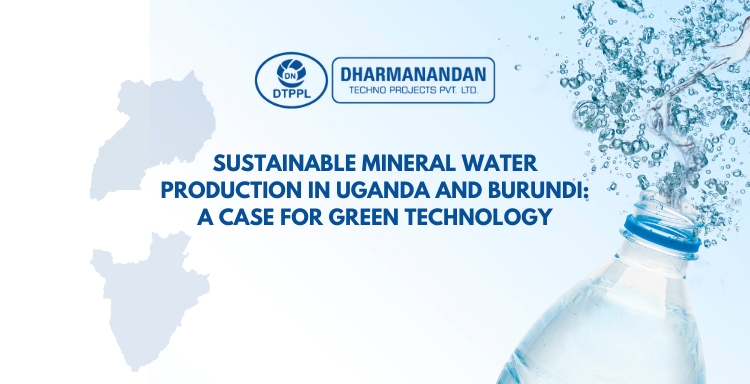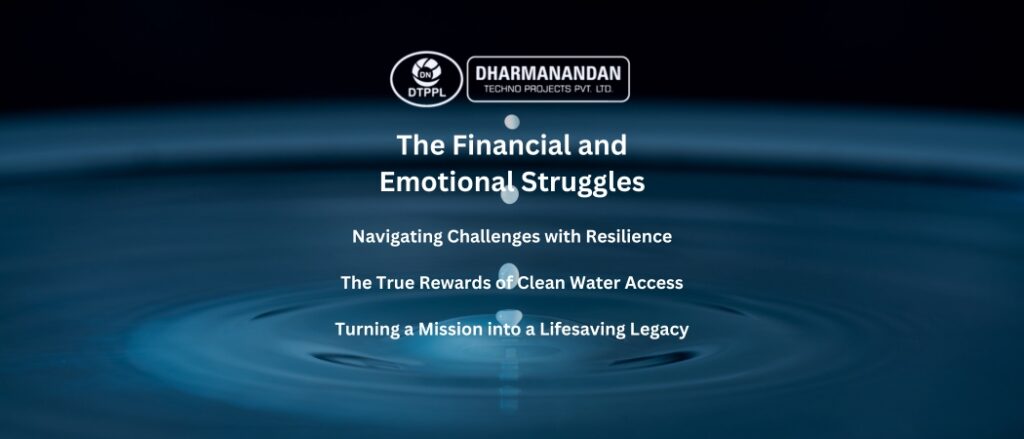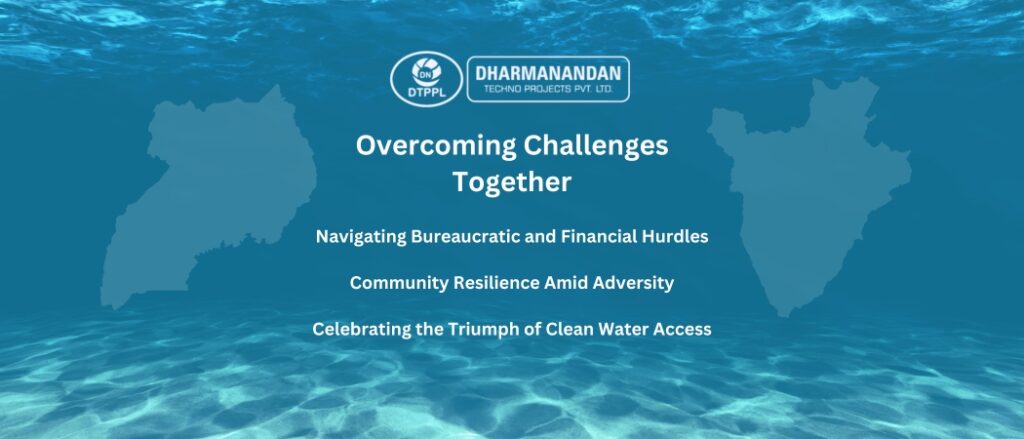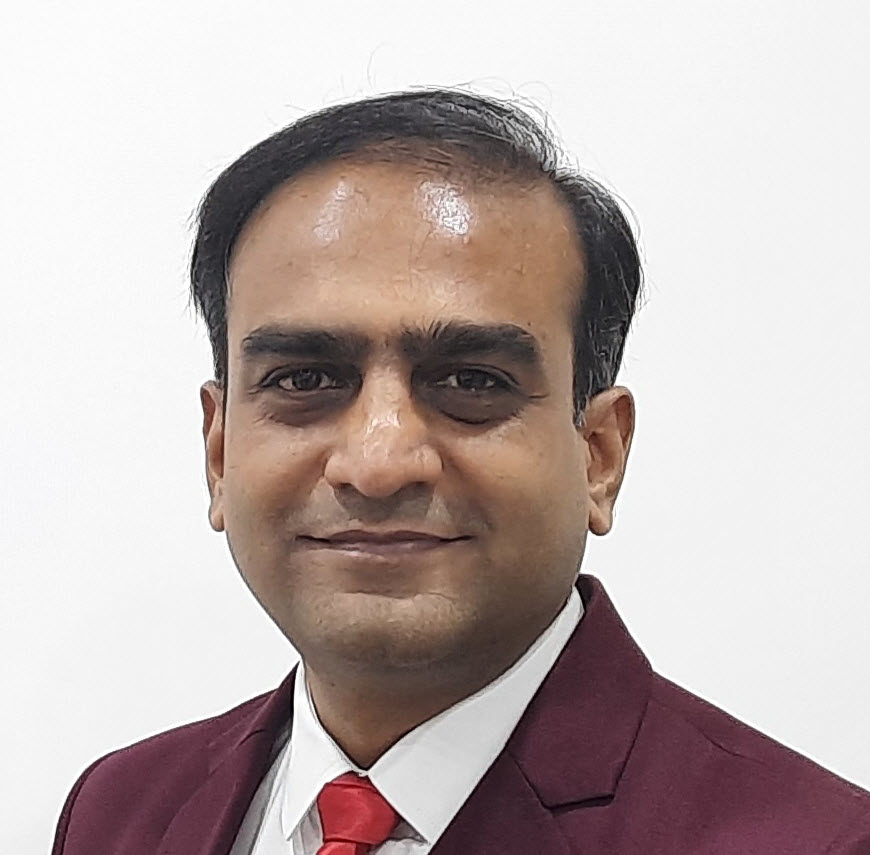
Table of Contents
Sustainable Mineral Water Production in Uganda and Burundi: A Case for Green Technology
December 27, 2024
A Story of Thirst and Hope
The sun rises over Uganda, casting a golden light across the dusty earth, but for families gathering around an old, unreliable community well, the morning feels heavy. The struggle for water begins early, with mothers and children waiting their turn, anxiety etched into every tired smile. Across the border in Burundi, the scene is just as familiar: parched fields, polluted streams, and endless walks in search of a clean drop. The weight of water scarcity doesn’t just burden bodies; it crushes spirits, gnaws at dreams, and feeds a cycle of exhaustion and fear.
Yet, as the climate crisis intensifies and traditional water sources become more unpredictable, the story is beginning to change. In Uganda and Burundi, the emergence of mineral water plants powered by green technology is a lifeline, offering not only clean water but also a promise of environmental sustainability. This isn’t just about installing machines; it’s about hope and healing, for both people and the land.
The Pain of Water Scarcity
Imagine what it feels like to live with constant uncertainty. Parents lie awake at night, worrying if the river will have enough clean water for the next day. Children walk miles on aching feet, their education stolen by the time-consuming chore of fetching water. In Uganda, entire communities feel the crushing stress of water scarcity, the fear that tomorrow might bring yet another day of thirst. In Burundi, people have watched the once-abundant natural springs dry up, their waters polluted or vanishing altogether. The trauma runs deep, carving invisible wounds into the hearts of those who yearn for change.
A Glimpse of Change: Mineral Water Plants
But then comes the possibility of something revolutionary: a mineral water plant in Uganda or Burundi, where purified water flows, free from the contamination that causes disease. These aren’t just factories; they’re places of transformation. Using green technology, these plants promise to deliver safe drinking water while preserving the environment. It’s a delicate balance, but one that could mean everything to those who live with the fear of running dry.
Imagine the moment when a community that has always struggled for water suddenly has an abundant, safe supply. Children laugh and play without fear of sickness, and mothers breathe a sigh of relief knowing their families are protected. But getting to this moment is a journey filled with obstacles and resilience.
The Financial and Emotional Struggles
Setting up a sustainable mineral water plant is no easy feat. Entrepreneurs and communities face staggering financial burdens. The cost of setting up a mineral water plant is a mountain to climb, with high investments needed for eco-friendly infrastructure and advanced mineral water equipment. In Uganda, project leaders worry endlessly about where the funds will come from, stressing over whether the investment will pay off. They face a constant stream of questions: Will the plant be profitable? Will it make a real difference?
In Burundi, local groups have spent years trying to establish green facilities. Every financial setback feels like a personal failure, each delay a threat to the dream of clean, sustainable water. The emotional weight is enormous. But the vision of a thriving community, where water isn’t just clean but also produced responsibly, keeps them fighting. The reward isn’t just in the profits but in the knowledge that they are changing lives and setting a new standard for environmental care.

Embracing Green Technology
Green technology is more than a trend; it’s a necessity. In Uganda, plants that operate on solar power and efficient purification systems are making a real impact. These facilities harness the power of nature to create clean water while leaving a minimal environmental footprint. Yet, the road is never straightforward. The mineral water plant cost can feel overwhelming, and entrepreneurs must choose between cheaper, unsustainable methods or long-term, eco-friendly investments. Those who choose the latter understand that it’s not just about today—it’s about the legacy they leave behind.
In Burundi, the innovation continues. Some plants are using advanced filtration systems that recycle water and minimize waste. Others focus on sustainable packaging, knowing that the battle for a healthier planet extends beyond the water itself. It’s a fight against pollution and waste, and every investment in green technology is a step forward.
The Human Element: Stories of Grit and Gratitude
Behind every successful mineral water plant project is a story of sacrifice and hard work. Workers who once struggled to make ends meet now take pride in their roles at these plants, knowing that their efforts bring life to their communities. In Uganda, one worker described the joy of knowing that each bottle filled isn’t just a product; it’s a promise of health and hope. In Burundi, families have expressed gratitude not only for the water but for the jobs these projects create. It’s a ripple effect: clean water leads to healthier communities, more educational opportunities, and even a stronger local economy.
The emotional journey isn’t just experienced by those who run these plants; it touches everyone. Imagine a father who, after years of seeing his family suffer, can now watch his children drink without fear. Or a teacher in a small village school who no longer has to worry about students missing class because of waterborne diseases. These are the victories that make every struggle worthwhile.
Overcoming Challenges Together
The road to sustainable mineral water production is fraught with challenges. In Uganda, entrepreneurs have had to deal with bureaucratic delays and the staggering mineral water plant setup cost. In Burundi, harsh terrain and limited infrastructure make every achievement feel like a miracle. Yet, communities are rising to the challenge together, driven by a collective will to secure a better future. Even when setbacks threaten to derail progress, the shared goal of clean, sustainable water keeps everyone focused.
One community leader described the sheer stress of balancing budgets, overseeing construction, and meeting environmental regulations. Yet, there’s a deep pride in overcoming these hurdles. The triumph isn’t just in getting the plant operational; it’s in the faces of children who no longer have to worry about where their next drink of clean water will come from.

The Future of Mineral Water Production
The future lies in even greater innovation. As more mineral water plants embrace green technology, the hope is that production will become even more efficient and environmentally friendly. In both Uganda and Burundi, the focus is shifting toward practices like rainwater harvesting and biodegradable packaging. The dream is a world where water production heals, rather than harms, the earth. The investment is substantial, but the impact is undeniable.

Conclusion
The journey of sustainable mineral water production in Uganda and Burundi is a story of resilience, innovation, and profound hope. It’s about communities coming together to embrace technology that not only provides clean water but also cares for the planet. Every setback faced and every obstacle overcome brings these countries closer to a future where no child has to suffer for a lack of water.
If you feel inspired to be part of this movement and make a real difference, working with a trusted partner is essential. DTPPL (Dharmanandan Techno Projects Pvt Ltd.), a leading manufacturer and supplier of mineral water plants, offers sustainable solutions tailored to your needs. Contact DTPPL today to learn how you can bring green technology into your water project and be a catalyst for change in your community.
About Author

Director – Global Marketing and Sales
Mr. Bhavesh from Dharmanandan Techno Projects Pvt. Ltd. has played a pivotal role in elevating the DTPPL brand to the global stage, leveraging his exceptional expertise in marketing and communications. He is committed to helping clients achieve significant growth while strengthening their own brands. Dharmanandan Techno Projects Pvt. Ltd. is a leading manufacturer and supplier of water purification systems and turnkey solutions for mineral water plants. With years of experience in designing and delivering high-quality water treatment solutions, the company provides end-to-end services, including system design, installation, maintenance, and ongoing support. Specializing in scalable and customizable water plants, DTPPL has successfully served industries worldwide, ensuring clean and safe drinking water across diverse applications.




